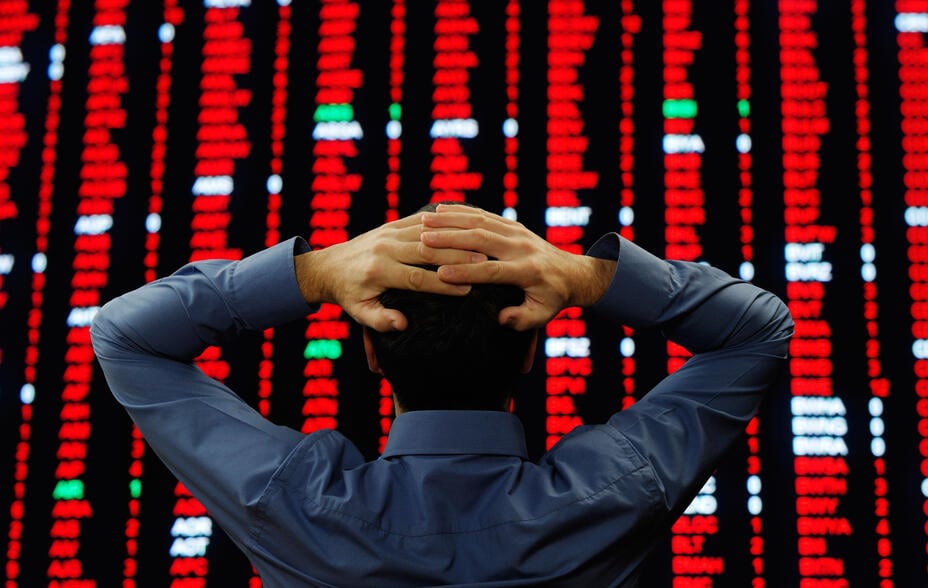Investing in the Chilean mining company charging the energy transition
In a world preoccupied with tariffs and trade wars, we find ourselves discovering opportunities in one of the lesser talked about countries of the world - Chile. Its strategic position in the global metals market in particular has captured our attention. Over the years, our focus has spanned various metals and currently your portfolio has exposure to copper and platinum. More recently we have turned our attention to lithium, another material that is fundamental to the energy transition, with the recent addition of Sociedad Química y Minera de Chile (SQM).

Chile's Atacama salt flats hold the world's second-largest lithium mine
Investors should carefully consider the objectives, risks, charges and expenses of the Fund before investing. This information and other information about the Fund can be found in the prospectus and summary prospectus. For a prospectus or summary prospectus please visit our website at https://usmutualfund.bailliegifford.com. Please carefully read the Fund’s prospectus and related documents before investing. Securities are offered through Baillie Gifford Funds Services LLC, an affiliate of Baillie Gifford Overseas Limited and a member of FINRA.
SQM is a leading and low-cost lithium mining company based in Chile, which operates the world’s second-largest lithium mine in the Salar de Atacama. The demand story for lithium is relatively well known; it is a key component of Electric Vehicle (EV) batteries, which account for approximately 75 per cent of demand. With the International Energy Agency predicting that 145 million electric cars are expected to hit the roads by 2030, it is going to be a critical enabler of the transition to cleaner energy.
Some estimates suggest that lithium supply will need to triple by 2030 just to keep pace; lithium mines are not quick or easy to develop and they can take up to 25 years to become fully operational. There will no doubt be bumps in the road to broader EV adoption. While the new Trump administration is challenging near term assumptions, tariffs will impact supply chains and what happens in Ukraine will impact energy prices, the adoption of EVs is well underway and a change in US policy is not enough to de-rail demand. Even President Trump has been seen in an EV in recent times!
It is worth remembering the real-world forces that haven’t changed, and that we would argue can be far more impactful; continuous advancements in battery technology are leading to longer ranges, faster charging times and lower costs, awareness about climate change is driving both consumers and governments to support cleaner energy options, and most major automakers have already committed billions to electrification. While policy alignment can be helpful, people tend to buy these cars because they’re sleek, fast, feature-rich, and cost-effective in the long run.
While the demand side of the equation should be relatively predictable, it is the recent issues with overcapacity on the supply side and the impact on pricing which has piqued our interest. Lithium prices have fallen approximately 80 per cent from their peak. We are now at a point in the cycle when producers have announced cuts or delays in planned expansions, with high-cost operations being placed into care and maintenance, and even low-cost producers are starting to retrench.
While our efforts are not focused on trying to precisely time the bottom, we think our patience allows us to position ahead of an expected inflection point. There is a startling imbalance between the speed of change in demand and the time taken to bring on new supply. For instance, developing a new lithium deposit in Nevada has already spanned four government administrations and remains incomplete. As global electrification accelerates, we expect the stage to set for a recovery in lithium prices.
Geopolitically, we’re witnessing a fierce competition for critical minerals. Interestingly, the US was the largest producer of lithium in the 1990s but today Chile, China and Australia dominate 90 per cent of supply. Recent headlines report that President Trump is planning to use 30 million acres of Pentagon-managed land for refining operations and with his keen interest in Greenland, there is growing evidence of an intent to reduce reliance on China. For China, its dominance in the supply chain provides a position of strength, with the Chinese Ministry of Commerce announcing an intention to restrict the export of certain lithium processing technologies. Chile, an impartial member of the global south, has already begun tightening its controls too.
The ‘Lithium Triangle’, which encompasses parts of Chile, Argentina and Bolivia, holds approximately 60 per cent of the world’s lithium reserves. This is a significant part of the attraction of owning SQM, which benefits from its position in this triangle, particularly in the Salar de Atacama. This salt flat has the highest concentration of lithium among all global brine sources. Its dominant and low-cost position should ensure it can weather volatility better than peers, allowing it to perform for those investors that are willing to look through the near-term gloom. While this brings a compelling opportunity, it is not a simple ‘buy and hold’ scenario. Both the cyclical nature of commodity investing and the volatility of lithium prices require a careful balance between allowing time for the investment case to unfold, as well as maintaining discipline in managing the position, especially if the shareprice responds quickly to a change in lithium pricing.
More broadly, we should highlight that lithium’s role extends beyond EVs. It is vital for battery storage in renewable energy systems, smartphones, laptops, and even personal medical devices such as hearing aids. As well as this, governments and businesses are investing in grid-scale energy storage, which relies on massive lithium battery banks. The global battery market was valued at $144 billion in 2024 and is projected to reach $322 billion by 2030, underpinning that lithium is not just about EVs, it's about powering the future. Herein lies our opportunity: the dependence on critical minerals like lithium offers us as long-term investors an opportunity to benefit from the global shift towards cleaner energy.
Risk Factors
The Funds are distributed by Baillie Gifford Funds Services LLC. Baillie Gifford Funds Services LLC is registered as a broker-dealer with the SEC, a member of FINRA and is an affiliate of Baillie Gifford Overseas Limited. All information is sourced from Baillie Gifford & Co unless otherwise stated.
As with all mutual funds, the value of an investment in the Fund could decline, so you could lose money. International investing involves special risks, which include changes in currency rates, foreign taxation and differences in auditing standards and securities regulations, political uncertainty and greater volatility. These risks are even greater when investing in emerging markets. Security prices in emerging markets can be significantly more volatile than in the more developed nations of the world, reflecting the greater uncertainties of investing in less established markets and economies. Currency risk includes the risk that the foreign currencies in which a Fund’s investments are traded, in which a Fund receives income, or in which a Fund has taken a position, will decline in value relative to the U.S. dollar. Hedging against a decline in the value of currency does not eliminate fluctuations in the prices of portfolio securities or prevent losses if the prices of such securities decline. In addition, hedging a foreign currency can have a negative effect on performance if the U.S. dollar declines in value relative to that currency, or if the currency hedging is otherwise ineffective.
For more information about these and other risks of an investment in the Funds, see “Principal Investment Risks” and “Additional Investment Strategies” in the prospectus. There can be no assurance that the Funds will achieve their investment objectives.
Baillie Gifford held the following stocks as at end March 2025: Sociedad Química y Minera de Chile (SQM). A full list of holdings is available on request.





